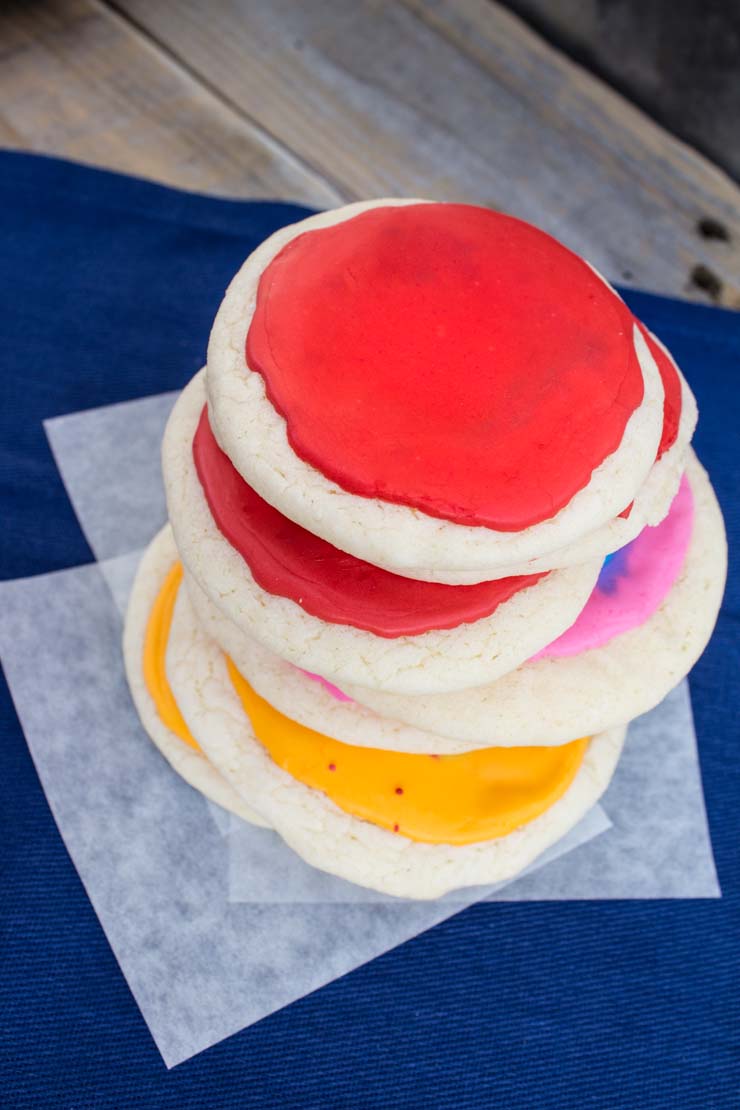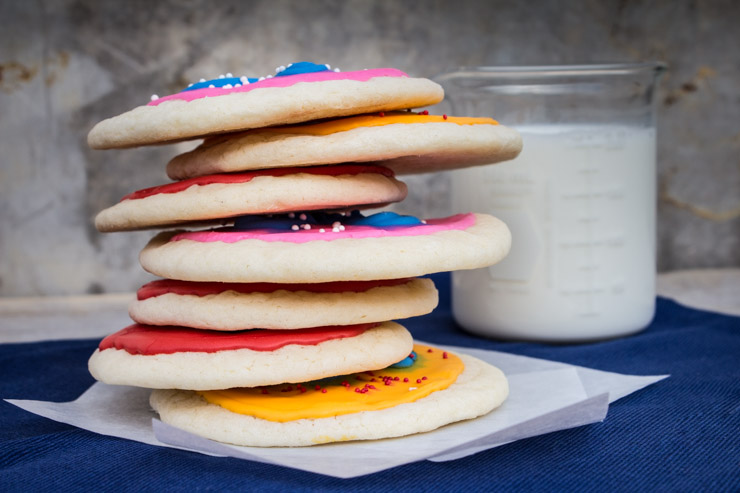
Monocytes, neutrophils, eosinophils, phagocytes… OH MY! High school biology flashback, anyone? Whether you enjoyed science or not, I know you will enjoy eating it! Geek out with our cellular, iced cookies.
I can remember AP Biology class in high school. Well… most of it, at least. The beginning of the semester included a quick review of the cellular makeup, including mitochondria, ER, ribosomes, etc. My teacher decided to quiz us on these parts by having us make huge cookies with the various cellular organelles frosted on top. Not only did it provide the much-needed sugar rush to get me through the day, but I can actually still remember every cellular organelle. Win, win!
Being that guy that always brings in the leftover sweets to campus, I was recently drafted to bring something in for a graduate student association fundraiser for a local cancer treatment charity. I asked around about what people were planning on bringing– It was a competition (with prizes!), after all. I wasn’t about to lose without a hell of a fight! I thought about doing some cupcakes or cookies, but then it hit me. Hello? This place is FULL of geeks and nerds. I have to make something that most people will just look at with confusion and slight concern! Cell cookies for the win.

Trying to figure out how to decorate the cookies brought several ideas to the hot plate. Since I am a Cancer Biologist, I initially tried to figure out something that was specific to that field. I could try to pipe the structures of the various zinc-dependent endopeptidases, or matrix metalloproteinases/MMPs, that I study on a cookie… That idea died off quickly, since the cookies would have to be probably a foot wide to do that properly. Next time, perhaps.

How about red blood cells? Those are pretty easy. A nice, indented red blood would be cake! (pun….) Even though my fellow coworkers and student would probably get the reference with RBC cookies, it seemed a bit bland. I needed to add a few other cells to complete the array. I decided to add eosinophils, phagocytes and neutrophils.
Now. Have a seat with your #2 pencil. We’re going to go to school for a moment.

Red blood cells, or erythrocytes, are the most common blood cells and the primary means of delivering oxygen throughout the circulatory system. Eosinophils are white blood cells that help in immune response. Think of those seasonal sniffles or that allergic reaction your friend has when they find out that pie you just made has peanuts in it. Phagocytes can be though of as the guards in your body. They basically eat anything that they think to be foreign and not invited to the party. Neutrophils are a type of white blood cell (actually a phagocyte variation, as well). They play a major role in inflammation and immune response.
Now that you’ve passed the quiz, pour yourself a beaker of milk and have a cookie or ten for yourself! I wanted the decoration to be the feature of the cookies, so I opted to go with my simple, basic sugar cookie recipe for the base. A typical dyed royal icing was used to deliciously decorate the cells. I will say that decorating 4 different designs was quite the undertaking with regard to time consumption. My icing hardened a bit too early. Doing this again, I would thin the icing (bit of milk or water works fine) a bit more so the designs would fall into the base flood colors of the cells instead of sitting on top. Either way, they taste great!

PS- I won the 1st place prize for desserts with these cookies!
- 5 cups flour, all-purpose
- 3 cups sugar
- 1½ cups butter, room temp.
- 2 teaspoons baking powder
- 1 teaspoon salt
- 2 teaspoons vanilla extract
- 6 ounces egg whites (about 5 lg eggs worth), room temp.
- 2 teaspoons vanilla extract (I prefer clear for this)
- 8 cups confectioners' sugar
- gel coloring
- sprinkles, etc. for decorating, optional
- Sift flour, baking powder, salt together.
- Cream butter and sugar until smooth, about 2 minutes in stand mixer.
- Add in eggs and vanilla and stir until mixed.
- Slowly add flour, baking powder, salt mixture until combined, scraping down bowl sides as needed.
- If making the full size recipe, split into two balls and cool in refrigerator for at least one hour, preferably 2 hours.
- Preheat oven to 400 F.
- Roll dough into desired thickness. I prefer a softer, large sugar cookie. ¼-1/2 inch rolled out.
- Cut into desired shapes. Place on paper-lined or silicone mat sheet pan.
- Bake about 6-7 minutes. Don't over-bake. I prefer slight under-bake at 6 minutes for mine to stay soft.
- Cool cookies completely.
- Beat egg whites until foamy.
- Slowly mix in confectioners' sugar until well-combined.
- Mix on high speed until stiff peaks (peaks that stay in place) form, about 5-6 minutes.
- I split this recipe into several batches, depending on what colors are needed.
- Mix in gel coloring for your own use.
- Pipe on cookies by outlining first, filling in with the flood icing after. Thin icing with water (VERY carefully) if needed.
- Let cool completely.
- Visit SouthernFATTY.com and tell us how you decorated yours!
Adapted from Blood Cell Bakery.



Lasery
Hello 🙂 Your post is very brilliant and fascinated, I like the idea and conception. I retargeting main address for all friends… 🙂 Thanks!
Kyla
I’m currently making the recipe and it does not say how many eggs to put into the sugar cookies. But it calls for them in the step by step instructions, please help!
Phillip @ SouthernFATTY.com
Oh, no! Sorry about that! It’s four eggs.